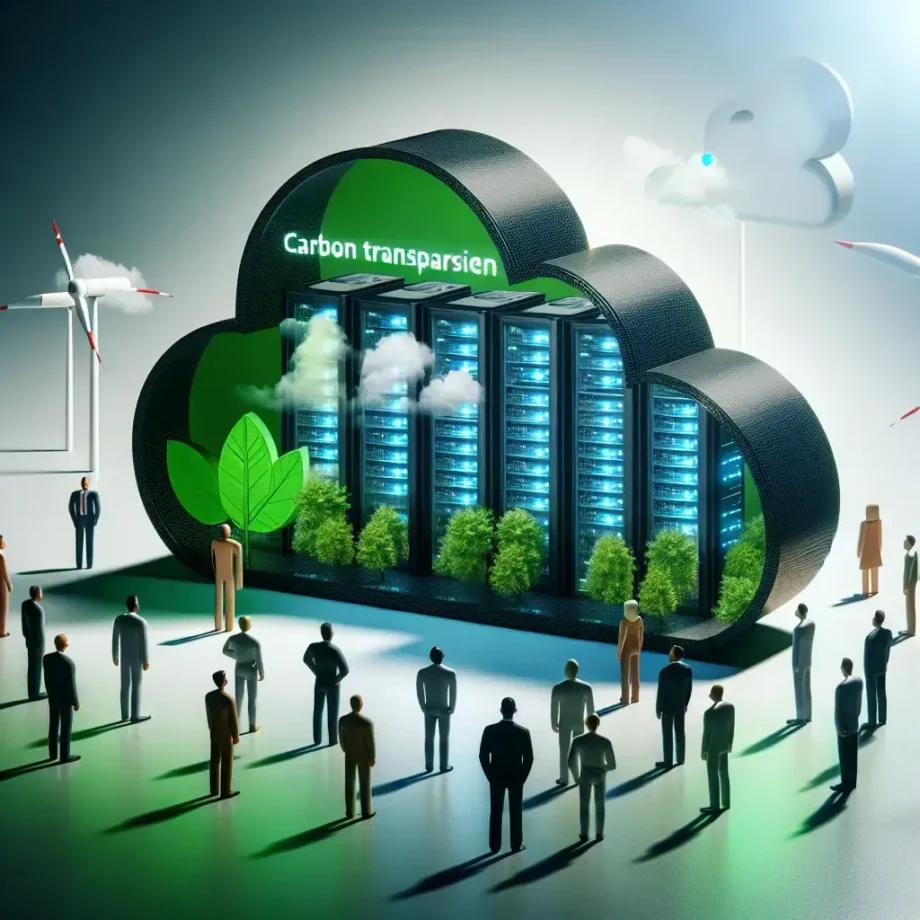
Introduction
As businesses increasingly prioritize sustainability, the demand for carbon transparency in the cloud computing sector has surged. Carbon transparency refers to the ability of organizations to track, report, and manage their carbon emissions effectively. This article delves into why carbon transparency attracts cloud clients and how it shapes the future of cloud services.
The Growing Importance of Sustainability
In recent years, the global emphasis on climate change and environmental responsibility has transformed how companies operate. A 2022 study revealed that over 80% of consumers prefer to engage with brands that demonstrate a commitment to sustainability. This shift in consumer behavior has pushed businesses to seek cloud providers that can offer transparency regarding their environmental impact.
Historical Context
The evolution of cloud computing has been remarkable, with the industry rapidly expanding since its inception in the early 2000s. Initially, cloud services were primarily marketed on the basis of efficiency and cost-effectiveness. However, as awareness of climate change grew, businesses began to prioritize sustainability alongside operational performance. This shift marks a pivotal moment in the cloud industry, leading to a demand for carbon transparency.
What is Carbon Transparency?
Carbon transparency involves providing clear and accessible information about an organization’s carbon emissions, reduction strategies, and overall environmental impact. It allows clients to make informed decisions based on the sustainability practices of their cloud providers. Key components of carbon transparency include:
- Accurate emissions reporting
- Verification by third-party auditors
- Accessibility of data for clients
- Commitment to carbon reduction initiatives
Why Carbon Transparency Attracts Cloud Clients
1. Building Trust and Credibility
In a world where greenwashing is prevalent, carbon transparency fosters trust. Clients are more inclined to partner with cloud providers that are open about their carbon footprint. By demonstrating a genuine commitment to sustainability, providers can enhance their credibility and attract environmentally conscious clients.
2. Aligning with Corporate Values
Many organizations have adopted sustainability as a core value. When cloud providers offer transparency about their carbon emissions, they align themselves with these corporate values. This alignment helps companies feel more secure in their choice of cloud services, knowing that their provider shares their commitment to environmental stewardship.
3. Competitive Advantage
As the cloud market becomes increasingly competitive, carbon transparency can serve as a differentiating factor. Cloud providers that prioritize and showcase their sustainability efforts are likely to attract clients who are looking for environmentally responsible options, gaining a competitive edge over those that do not.
4. Regulatory Compliance
With governments worldwide implementing stricter regulations regarding carbon emissions, businesses must adapt to remain compliant. Cloud providers that practice carbon transparency can help their clients navigate these regulations more effectively. This support minimizes operational risks and reinforces a partnership built on shared values.
5. Data-Driven Decision Making
Clients benefit from carbon transparency as it provides them with data necessary for making informed choices. Access to emissions data empowers organizations to assess their own carbon footprint, enabling them to implement strategies for reduction and sustainability. This collaborative approach fosters a sense of responsibility and shared purpose.
Future Predictions for Carbon Transparency in Cloud Services
As technology advances, the future of carbon transparency in cloud services looks promising. The integration of artificial intelligence and machine learning can enhance the accuracy of emissions tracking and reporting. Moreover, as clients demand more transparency, cloud providers will likely respond by adopting standardized metrics for measuring and reporting their carbon emissions.
1. The Rise of Carbon Footprint APIs
In the future, we may see the emergence of APIs specifically designed to track carbon footprints in real time. These tools will enable businesses to monitor their emissions dynamically, making it easier to adjust strategies and report on sustainability efforts.
2. Enhanced Reporting Standards
Standardized reporting frameworks will likely gain traction, enabling cloud providers to streamline their carbon transparency efforts. As frameworks such as the Greenhouse Gas Protocol and the Science Based Targets initiative become more widely adopted, clients will benefit from consistent and comparable data across providers.
Pros and Cons of Carbon Transparency
Pros
- Increased trust: Transparency builds credibility among clients.
- Improved sustainability: Providers are more likely to engage in proactive carbon reduction strategies.
- Market differentiation: Providers can set themselves apart in a crowded market.
- Enhanced client relationships: Clients appreciate partners who are committed to sustainability.
Cons
- Cost implications: Investing in carbon tracking systems can be expensive.
- Complexity: Accurately measuring and reporting emissions can be complicated.
- Potential for miscommunication: Clients may misunderstand reporting metrics.
Real-World Examples of Carbon Transparency
Several cloud providers have embraced carbon transparency, setting a precedent in the industry:
- Microsoft: The tech giant has committed to becoming carbon negative by 2030, and its sustainability dashboard provides clients with detailed emissions data.
- Google Cloud: Google offers insights into its renewable energy usage and carbon offset projects, allowing clients to gauge their impact.
- AWS: Amazon Web Services has implemented a carbon footprint tool that enables clients to estimate their emissions based on usage.
Conclusion
Carbon transparency is no longer just a buzzword; it is a crucial aspect of the cloud computing industry that attracts clients seeking sustainable solutions. By fostering trust, aligning with corporate values, and providing data-driven insights, cloud providers can position themselves as leaders in sustainability. As the demand for carbon transparency grows, embracing this practice will not only benefit individual businesses but will also contribute to a more sustainable future for the entire industry.
